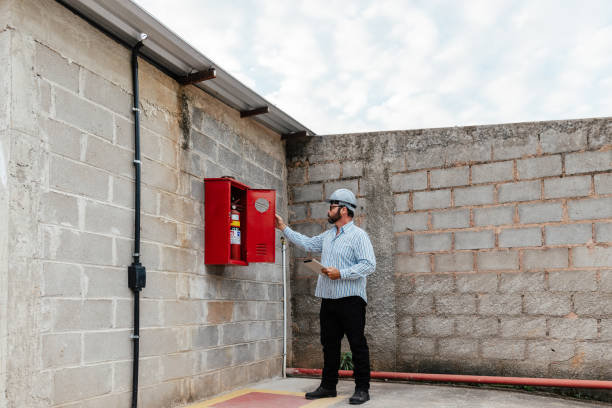UK Government Announces Key Changes to Fire Safety Laws
The UK government has recently rolled out some important updates to fire safety laws, aiming to make buildings safer and better protect vulnerable people.
In a statement released on 2 September 2024, the government outlined several major changes that will affect everything from construction practices to residential safety measures and the qualifications of fire safety professionals. The key updates include:
- Sprinklers in Care Homes
- Personal Emergency Evacuation Plans (PEEPs)
- CE Marking for Construction Products
- Moving to European Fire Testing Standards
- Second Staircases for Tall Residential Buildings
- Raising Competence for Fire Risk Assessors
Sprinklers in Care Homes
What’s changing?
Starting on 2 March 2025, all new care homes, no matter their height, will need to have sprinklers installed.
Why it matters?
This is a crucial step in protecting care home residents and staff. Sprinklers, combined with L1 fire alarms, will help put out fires quickly, reducing damage, improving the chances of safe evacuations, and ultimately saving lives. It’s about making sure those who need the most protection is kept safe in an emergency.
Personal Emergency Evacuation Plans (PEEPs)
What’s changing?
PEEPs are customized evacuation plans for people who need extra help during emergencies—whether due to age, disability, or mobility issues. These plans specify the support and actions needed to help them evacuate safely in the event of a fire or other emergency.
Why it matters?
PEEPs are essential because they make sure vulnerable individuals have a clear and effective plan in place for getting out of a building in an emergency. They reduce confusion, help responders act quickly, and can ultimately prevent injuries or fatalities by ensuring everyone has the support they need to escape safely.
CE Marking for Construction Products
What’s changing?
The CE mark will now be required on construction products, confirming they meet the European Union’s health, safety, and environmental standards.
Why it matters?
It keeps safety standards intact and prevents any setbacks during the transition period.
Transition to European Fire Testing Standards
What’s changing?
The UK government is moving from the older BS 476 fire testing standards to the more detailed BS EN 13501. This transition will happen gradually, starting with testing for fire reactions and roofs, and then moving on to fire resistance standards. This phased approach gives manufacturers time to adjust.
Why it matters?
Switching to the BS EN 13501 standards aligns the UK with internationally recognized fire safety tests, ensuring that products meet higher safety standards. The gradual rollout allows manufacturers enough time to adapt without disruption.
Second Staircases in Tall Residential Buildings
What’s changing?
Starting on 29 March 2024, new regulations will require residential buildings taller than 18 metres to have a second staircase installed. This extra staircase will provide residents with an additional escape route in case of an emergency.
Why it matters?
Second staircases are a game-changer for evacuation in tall buildings. They help reduce congestion and delays during emergencies, making it easier for people to exit quickly and safely.
Raising Competence in Fire Risk Assessors
What’s changing?
The government is focusing on enhancing the skills and qualifications of fire risk assessors by offering advanced training and creating accredited competence schemes.
Why it matters?
Ensuring fire risk assessors are highly skilled is crucial for maintaining top-notch fire safety standards. Well-trained professionals can identify hazards more accurately, implement better safety measures, and ensure compliance with evolving regulations. This means fewer fire-related incidents and greater overall safety.
Implementation Timeline
The new changes will be rolled out over several years, beginning in 2025 and continuing until 2029. This phased approach gives everyone in the industry time to gradually adjust to the new requirements. For care homes, there will be a six-month transition period, followed by another six months to ensure that current development projects meet the new sprinkler standards.
What You Need to Do
These recent updates to the UK’s fire safety laws represent a major step forward in building safety and fire risk management. With key changes such as the introduction of PEEPs, the mandatory installation of sprinklers in care homes, and the shift to European fire testing standards, the government is clearly committed to better protecting vulnerable populations and improving overall fire safety.
If you’re unsure about what your organization needs to do, feel free to get in touch with us at info@samsltd.co.uk and speak to our team.

